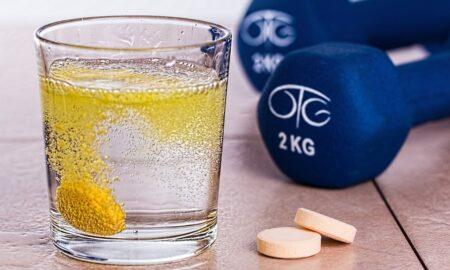Whey remains the protein of choice for bodybuilders. Scientists recently compared the acute response of mixed muscle protein synthesis to rapidly (whey hydrolysate and soy) and slowly (micellar casein) digested proteins both at rest and after resistance exercise.1 Yep, soy is considered a “fast” protein.
Three groups of healthy young men performed a bout of single-leg resistance exercise and then drank a mixture containing 10 grams of essential amino acids in whey hydrolysate, micellar casein or soy protein isolate. Rather than making the three drinks equal in terms of total protein, the researchers controlled them for the total of essential amino acids. Interesting.
Mixed muscle protein synthesis at rest was higher when the subjects got the faster proteins. In fact, with whey it was about 93 percent greater than with casein and about 18 percent greater than with soy.
A similar result was observed after exercise; muscle protein synthesis following whey intake was approximately 122 percent greater than with casein and 31 percent greater than with soy. Those results confirm another study that looked at protein supplementation over a 10-week training period. Scientists compared the effects of hydrolyzed whey isolate and casein on strength, body composition and plasma glutamine during a 10-week supervised resistance-training program.2 In a double-blind protocol, 13 male recreational bodybuilders supplemented their normal diet with either whey isolate or casein at a dosage of 1.5 grams per kilogram of bodyweight. The whey group gained more lean body mass than the casein group and lost more fat. The whey group also achieved significantly greater improvement in strength than the casein group in each assessment of strength. When the strength changes were expressed relative to bodyweight, the whey group still achieved significantly greater improvement in strength than the casein group.
But here’s the question: Why is there a difference between soy and whey, which are both fast, when the protein doses had the same essential amino acid content? Scientists speculate that the greater total branched-chain amino acid content (about 7 percent more) and leucine content (about 28 percent more) may explain the greater muscle protein synthesis rates with whey.
So leucine might serve as the critical trigger for maximally stimulating protein synthesis. I say, why not just add more BCAAs and leucine to soy or casein? Ah, who has time for that?
There you have it. Training data indicate that whey protein is the more anabolic of the two. As for soy, who gives a hooey about that protein anyhow?
Editor’s note: Jose Antonio, Ph.D., is the CEO of the International Society of Sports Nutrition (www.theissn.org) and is a sports science consultant to VPX/Redline. IM
References
1 Tang, J.E., et al. (2009). Ingestion of whey hydrolysate, casein, or soy protein isolate: effects on mixed muscle protein synthesis at rest and following resistance exercise in young men. J Appl Physiol. In press.
2 Cribb, P.J., et al. (2006). The effect of whey isolate and resistance training on strength, body composition, and plasma glutamine. Int J Sport Nutr Exerc Metab. 6(5):494-509.




















You must be logged in to post a comment Login